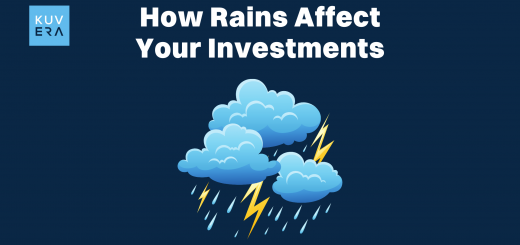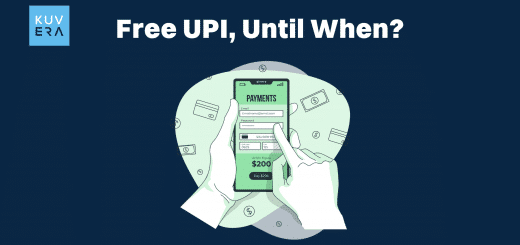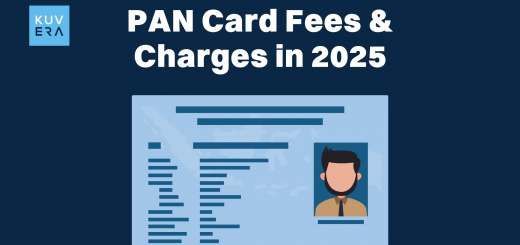Before we understand what is the redemption of debentures it is very critical to understand what debentures are and what purpose they serve.
What Are Debentures?
Every company needs funds to operate. Many companies can raise capital by offering shares to the public. However, it is not possible for all companies to go public, especially those that have been established recently. Another alternative method of obtaining funds is through borrowing. Here, the companies can borrow funds through debentures.
It is a debt instrument that may or may not be backed by any kind of collateral. They are used by companies and governments to raise capital by borrowing money from the public. Simply put, it is a legal document that mentions the principal amount, the interest rate, and the schedule of payments. At maturity, the investor receives both the principal and the interest.
The investor has no claim to the company’s assets in the event of a default if the debentures are unsecured. Therefore, before making an investment, investors should verify the credit ratings of these instruments.
What Are The Different Types Of Debentures?
Depending on its goals and needs, a firm may issue different types of debentures.
- Convertible Debenture:
Holders of convertible debentures have the option to convert their debentures into equity shares. At the time of issuance, the corporation specifies the rights of holders, the conversion date, and other terms and conditions. They are further divided into:
-
- Partly Convertible: They may be partially convertible into equity shares by the issuing corporation. When this is issued, the company determines the conversion ratio and the conversion date.
-
- Fully Convertible Debentures: They are fully convertible into equity shares. While issuing the instrument, the conversion rate and time of conversion are decided. Once converted, holders, enjoy the same rights as stockholders in the company.
-
- Optionally Convertible Debentures: The holder has the option of converting their debentures into equity shares at a price determined by the company at the time of issuance.
- Non-Convertible Debenture:
Non-Convertible Debentures are the type of standard financial instrument that restricts holders from converting into equity. Typically, these instruments have higher interest rates than their regular counterparts.
Non-Convertible Debentures (NCDs) are essentially debt securities that have a set repayment schedule and cannot be converted into equity. Investors benefit a lot from NCDs since they provide guaranteed returns, low risk, and tax advantages.
NCDs can be issued by a private placement mechanism or a public issue. The private placement method is now widely used to raise money through NCDs. For the issuing of NCDs, most companies (both public and private) and Non-Banking Finance Companies (NBFCs) prefer the private placement option.
Despite the turbulent year caused by the pandemic and sluggish business activity, companies have been raising funds through the private placement of NCDs. Since it gives the company seeking funds immediate liquidity, this approach is simpler for them to use. The company will experience a longer and more difficult procedure if it selects the traditional route of raising capital through an IPO. Under the private placement mechanism, companies pick a group of investors and issue a private placement offer letter to them in order to raise capital.
The company only needs to have a clear strategy as to how to structure the NCDs and what to offer to investors. The following information will assist the company in making an informed decision regarding the terms and conditions of NCD issuance:
-
- Eligibility: In general, there are no specific eligibility criteria for companies seeking to issue NCDs via private placement. However, the subsequent listing of the NCDs is subject to the eligibility criteria specific to the respective stock exchange.
-
- Fees and Expenses: The process of issuing NCDs through private placement is a technical one, and the fees and charges that apply to it depend on a variety of factors. Important factors that determine the fees and expenses associated with the issue and listing of NCDs include the location of the company, the location and value of the securitized assets, the fees payable to legal and financial consultants, and the stamp duty payable in accordance with the Indian Stamp Act of 1899. If the firm proposes to list NCDs issued through a private placement on a stock market, the applicable listing fees will depend on the issue size and the applicable fees of the particular stock exchange where the NCDs are proposed to be listed.
-
- Coupon rate: A coupon rate refers to the interest rate that a company promises to pay a debenture holder at a predetermined frequency. Credit ratings are mandatory for all companies, which helps to show their accurate financial standing and eliminate any risk of fraud.
Companies are switching to the private placement mechanism since the public issue of NCDs is significantly more expensive and time-consuming. There are positive trends that suggest companies will choose the private placement of NCDs over the public issue.
Features of Debentures
Some key features of debentures are –
- Promise: It is a written promise by the company to pay the specified amount of money to the holder.
- Face Value: A financial instrument’s face value is its initial issuance price.
- Duration of Payment: Time of repayment of the principal amount and interest on the maturity date.
- Interest Rate: The holder receives a fixed rate of interest payment periodically. The rate of interest on this instrument fluctuates based on the company, the current market conditions, and the nature of the company’s operations.
- Guarantee of payment: The long-term debt instrument carries an assurance of repayment on the specified due date. They can be redeemed at par, premium, or discounted prices.
Methods Of Redemption Of Debentures
Debentures are only useful to an investor when they are redeemed. A debenture is an official document that acknowledges a debt. A debenture is redeemed by returning the principal with interest to the holder. Therefore, when debentures are redeemed, their debt obligations are discharged. There are several ways to redeem debentures, each with a unique accounting process. In general, they can be classified as follows:
- Redemption through a lump sum payment
Lump sum redemption is when the debenture holders receive the amount they were promised on a specified date. According to this method of redemption, the debenture holders receive their agreed value in a single lump sum payment. The lump sum is the total principal amount of all debentures whose redemption occurs without a premium or discount. A specific date is mentioned whenever debentures are issued. This date is specified as the maturity date in a debenture agreement. The companies can, however, choose to pay the debentures before they mature as well.
- Redemption in installments
The company can also agree to redeem its debentures through installments, which must be paid in line with the agreement at the time of issuance. Certain companies explore this option because they are relieved of the burden of raising ad hoc funds at the time of maturity of debentures.
It is also known as “Redemption by Drawings”. A portion of the debentures gets redeemed each year. Usually, the total amount of debenture liability is divided by the total number of years.
- Redemption by purchasing the debentures through the open market
Debentures may also be redeemed through open market purchases. In this approach, the business can redeem its debentures for a lower cost, which will benefit its bottom line. The bottom line is a company’s income after all expenses have been deducted from revenues. If permitted by its Articles of Association (AoA), a company may redeem its own debentures by purchasing them on the open market. One of the reasons companies go for this is that it can be used as an investment option to earn more profits by selling them at a higher price at a later date.
Value At The Time Of Redemption
In order to protect the interests of both debenture holders and the company, the Companies Act grants the issuing company multiple options for redeeming the debentures. Debentures issued by the company can be redeemed at a value that was predetermined at the time of issuance. Debentures can be redeemed at different values, such as:
- At Par: In this instance, the face value of the debentures is equal to their redemption value.
- At Premium: In this case, the debentures’ redemption value is greater than their face value. For example, if the face value of a debenture is Rs. 100, the redemption value could be Rs. 110 or Rs. 120.
- At Discount: In this instance, debentures are redeemable for less than their face value. For instance, debentures with a face value of Rs. 100 may be redeemed for Rs. 90 or 80 per debenture.
Factors Affecting Redemption
The following factors are generally taken into account while redeeming debentures:
- Time: The period or due date of the redemption of the debentures is one of the most important factors. When issuing debentures, the company must expressly declare the duration of the debentures.
- Amount: The total estimated amount is due to the holder at the time of redemption. It comprises both the principal repayment amount and the interest.
What Is The Debenture Redemption Reserve (DRR)?
A debenture is a debt instrument that a company offers to generate capital and borrow money from investors at a fixed rate of interest. Therefore, the Debenture Redemption Reserve was introduced (u/s 117 of The Companies Act) to safeguard the debenture holders from the risk of default. According to this provision, the company issuing the debentures must set aside a part of the funds raised from debentures in a separate fund.
This effort is to protect the investors from the possibility of the company defaulting on repayments. Additionally, DRR ensures that sufficient funds are available to satisfy the obligations of debenture holders.
A Debenture Redemption Reserve (DRR) has two components. The first component is to set aside a portion of the company’s profits. Next is the process of profit allocation. This procedure is referred to as “earmarking of funds.” This ensures there are sufficient profits for the repayment of debentures. The second component is the investment of funds, which ensures that the company has enough liquidity for repayment. Few organizations are exempted from maintaining DRR. Some of them are:
- Public Financial Institutions (PFIs) are companies in which the central government owns more than 51% of the paid-up capital. Life Insurance Corporation of India (LIC), Infrastructure Development Finance Company Limited (IDFC), Industrial Credit and Investment Corporation of India Limited (ICICI), Industrial Finance Corporation of India (IFCI), and Industrial Development Bank of India (IDBI) are some examples of Public Finance Institutions (IDBI).
- All India Financial Institutions (AIFI) are companies under the supervision of the Reserve Bank of India (RBI). Examples of AIFI include the National Bank for Agriculture and Rural Development (NABARD), the Small Industries Development Bank of India (SIDBI), the Export-Import Bank of India (Exim Bank), and the National Housing Bank (NHB).
- Housing Finance Companies (HFCs) – registered under National Housing Bank (NHB) – are exempt from maintaining DRR.
- Non-Banking Finance Companies (NBFCs) – Companies registered under Section 45-IA of the Reserve Bank of India Act, 1934 are exempt from maintaining DRR.
- Scheduled Banks are all banks listed under Section 2 of the Reserve Bank of India Act, 1934.
- Listed Companies – A company that is listed on one of India’s two stock exchanges, the BSE or the NSE.
Utilization of Debenture Redemption Reserve: The company can invest in approved securities using the funds in DRR. The company can invest in the following types of securities:
- Deposits with any scheduled bank;
- Deposits in Central Government or any State Government treasury bills and commercial papers;
- Deposit in Long term bonds that have been issued by the Government.
The company should sell the investments and settle the liability when the debentures mature and are due for repayment. The profits from sales must only be used by the company to meet the debt holders’ repayment obligations. Additionally, the corporation should not adjust its profit or loss from the sale of investments toward the DRR. The corporation may transfer the remaining DRR to the general reserve account after paying off all of the debt to the investors.
Frequently Asked Questions (FAQs)
-
Why do companies issue debentures?
Debentures are long-term liabilities issued by companies to raise funds. Additionally, debentures are redeemed over a long period of time, giving the company enough time to complete its obligations.
-
What is the Debenture Redemption Reserve (DRR)?
Companies that have issued debentures are required to maintain the Debenture Redemption Reserve (DRR) fund. Its objective is to reduce the risk of default on repayment of debentures.
-
Who Should Invest in Debentures?
Investors with high-risk tolerance levels might consider investing in debentures. Although the return on debentures is predictable, there is no assurance of the same. Debentures are riskier than bonds since they are not backed by collateral. Thus, investors must choose the company based on its creditworthiness and track record. Debentures are subject to interest rate fluctuations.
One advantage of debentures is in the case of convertible debentures. Here, investors can convert them into company equity shares. Usually, they offer investors greater returns than bonds. However, they carry some risks with them. Investors may choose to invest in debentures as a short-term option, which can help them diversify their portfolios.
Interested in how we think about the markets?
Read more: Zen And The Art Of Investing
Watch/hear on YouTube:
Start investing through a platform that brings goal planning and investing to your fingertips. Visit Kuvera.in to discover Direct Plans and Fixed Deposits and start investing today.#MutualFundSahiHai #KuveraSabseSahiHai!











